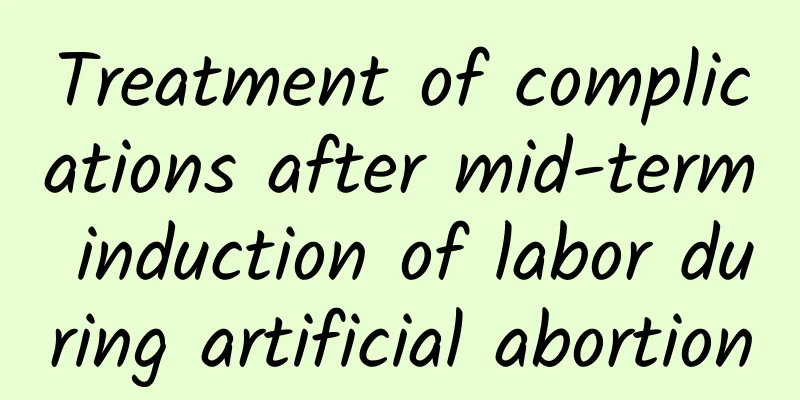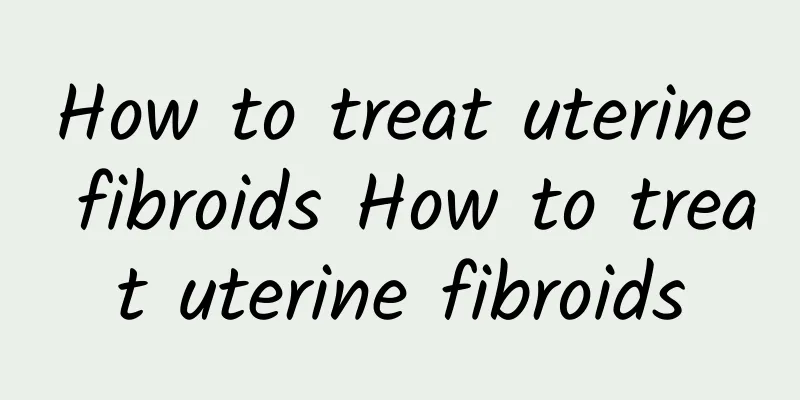Treatment of complications after mid-term induction of labor during artificial abortion

|
Mid-term induced labor is often due to missing the best time for abortion or problems with the mother or fetus. At this time, the placenta has been formed, the fetus is large, and the bones are hard. The cervix must be fully dilated during delivery, so it is more likely to have complications such as induced labor infection, uterine rupture, cervical and vaginal fractures, and placental retention. The treatment of related complications includes the following: 1. Treatment of infection during induced labor If the infection occurs before abortion, large amounts of antibiotics and hormones should be given intravenously to control the infection and prevent shock, while the decision on induction of labor and surgical methods should be made. If the infection occurs after induced labor, the patient should rest in bed and eat nutritious and easily digestible food. If the pain is severe, analgesics should be given. At the same time, strong and large amounts of antibiotics such as cephalosporin should be given intravenously. If intrauterine tissue residue is suspected, uterine curettage should be performed after the infection is controlled. 2. Treatment of uterine rupture and cervicovaginal rupture When patients have cervical and vaginal lacerations, the lacerations should be sutured promptly; when the uterus ruptures, cesarean section should be performed promptly; if patients lose too much blood and go into shock, anti-shock treatment should be actively given; antibiotics should be used after surgery to prevent infection. 3. Placenta Retention When the placenta remains in the uterine cavity, uterine curettage should be performed promptly; if the placenta is retained or adhered, manual removal should be performed under disinfection; if the patient has active vaginal bleeding, uterine curettage is required; if placental tissue residue is found in the puerperium, uterine curettage and pathological examination should be performed promptly; oxytocin should be used after surgery, and antibiotics should be used to prevent infection. |
<<: Diagnosis of functional hypothalamic amenorrhea
>>: What are the manifestations of true cervical erosion?
Recommend
Women should be on guard against the causes of adnexitis in a timely manner
At present, adnexitis is one of the more common f...
Is it useful to drink saffron if you have less menstrual flow?
When menstruation is scanty, drinking saffron may...
Processed foods and health links in postmenopausal women
For health reasons, it is better to eat less proc...
What are the causes of cervical erosion?
Cervical erosion is a type of cervical disease, w...
I was too passionate about killing monsters and I couldn't get rid of the fat bomb.
Are you a 3C geek who is troubled by obesity? Acc...
What are the clinical symptoms of cervicitis?
What are the clinical symptoms of cervicitis? Jus...
What are the symptoms of ovarian cysts?
Ovarian tumors are common tumors of the female re...
What are the symptoms of women's menopause "just beginning" and "about to end"? It is recommended to learn about it early
Ms. Li is a 48-year-old executive of a company wi...
How big is an ovarian cyst that requires surgery?
How big does an ovarian cyst need to be for surge...
Is itching down there caused by cervicitis?
Is the itching down there caused by cervicitis? 1...
Who says you have to starve to lose fat? 4 weight loss tips you must know!
A large Harvard study a few years ago showed that...
Will small uterine fibroids affect conception?
Will small uterine fibroids affect conception? 1....
What are the symptoms of vaginitis in pregnant women?
There are many classifications of vaginitis, such...
What are the dangers of ovarian cysts?
What are the dangers of ovarian cysts? Ovarian cy...
What is the cure rate of cervical precancerous lesions?
What is the cure rate of cervical precancerous le...









